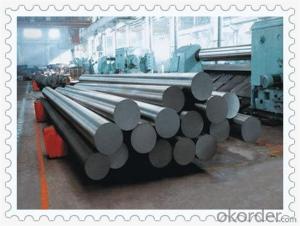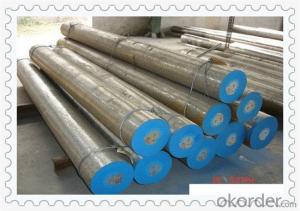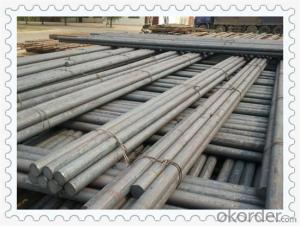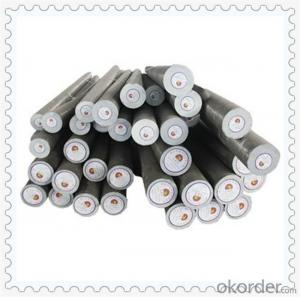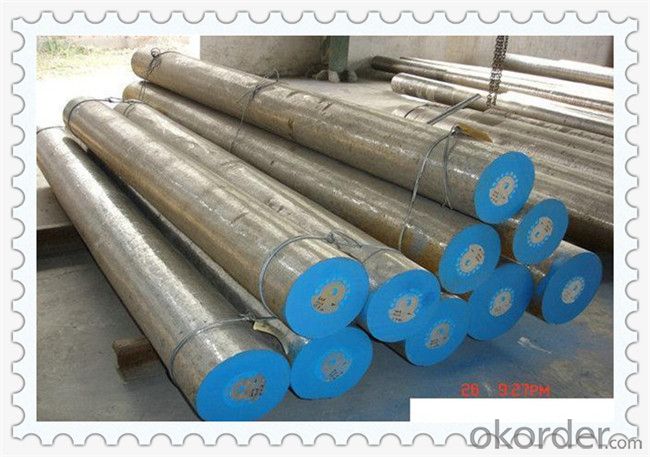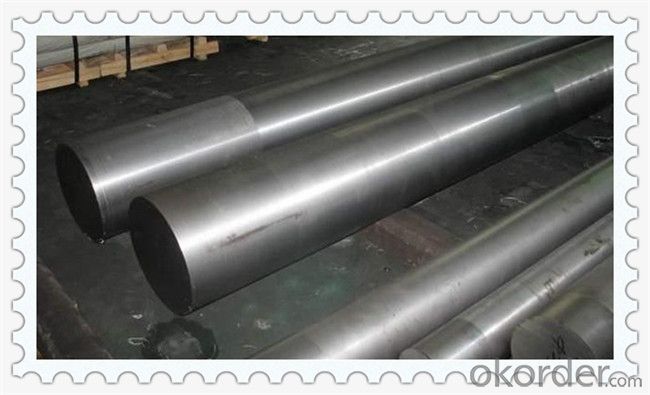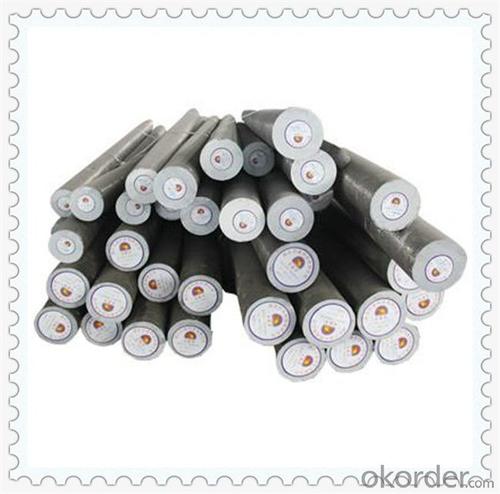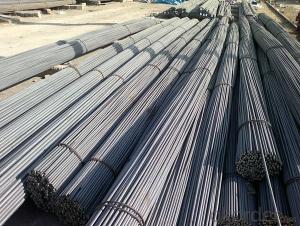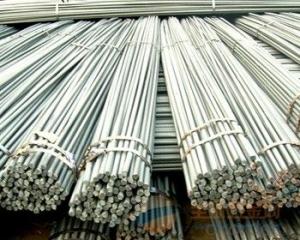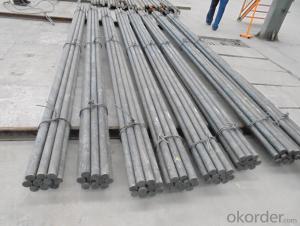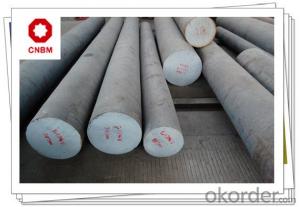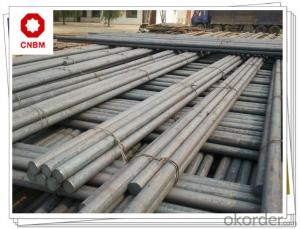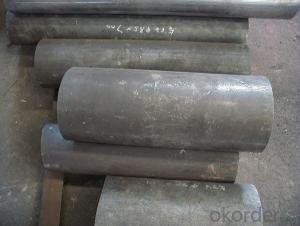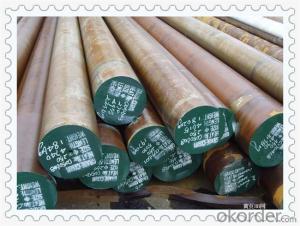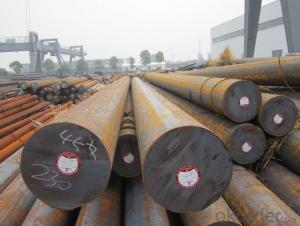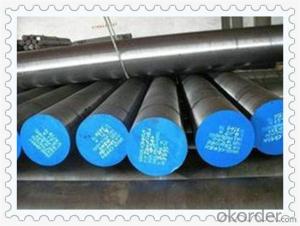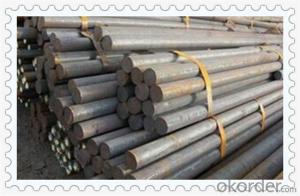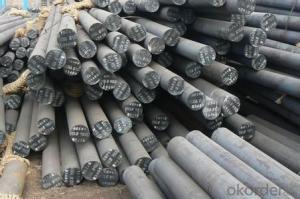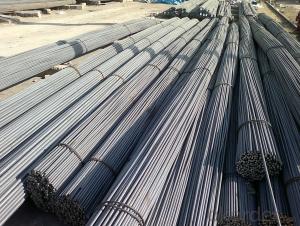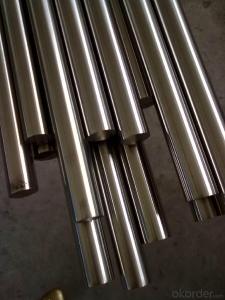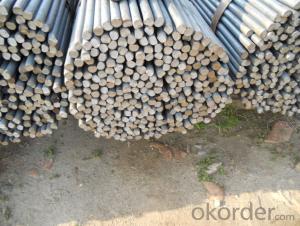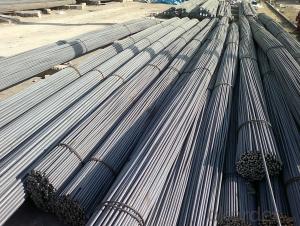Carbon Steel Rod Bar AISI 1050
- Loading Port:
- China main port
- Payment Terms:
- TT OR LC
- Min Order Qty:
- 30 m.t.
- Supply Capability:
- 10000 m.t./month
OKorder Service Pledge
OKorder Financial Service
You Might Also Like
Carbon Steel Rod Bar AISI 1050
Products Details
1, Size
Diameter : 10-1000mm
Length :1000-6000mm
2, Application
S50C structural carbon steel bar /1050 /50/C50 can be used to be manufactured forged gear, draw bar, roller,
shaft friction disc, shaft of machine tool, bent axle of engine, agricultural machanical plough share,
heavy load spindle and all kinds of shaft parts, minor damping spring and spring washer, etc.
3, Carbon Steel Round Bar Chemical Composition
Material | C | Si | Mn | S/P | B |
20# | 0.17-0.23 | 0.17-0.37 | 0.35-0.65 | 0.035(max) | 0.0008-0.003 |
25# | 0.22-0.29 | 0.17-0.37 | 0.50-0.80 | 0.035(max) | 0.0008-0.003 |
| 30# | 0.27-0.34 | 0.17-0.37 | 0.50-0.80 | 0.035(max) | 0.0008-0.003 |
35# | 0.32-0.39 | 0.17-0.37 | 0.50-0.80 | 0.035(max) | 0.0008-0.003 |
40# | 0.37-0.44 | 0.17-0.37 | 0.50-0.80 | 0.035(max) | 0.0008-0.003 |
45# | 0.42-0.48 | 0.17-0.37 | 0.50-0.80 | 0.035(max) | 0.0008-0.003 |
50# | 0.47-0.55 | 0.17-0.37 | 0.50-0.80 | 0.035(max) | 0.0008-0.003 |
55# | 0.52-0.60 | 0.17-0.37 | 0.50-0.80 | 0.035(max) | 0.0008-0.003 |
60# | 0.57-0.65 | 0.17-0.37 | 0.50-0.80 | 0.035(max) | 0.0008-0.003 |
4, Grade Equivalent
| GB | 20# | 30# | 35# | 40# | 45# | 50# | 55# | 60# |
| JIS | S20C | S30C | S35C | S40C | S45C | S50C | S55C | S60C |
| ASTM | 1020 | 1030 | 1035 | 1040 | 1045 | 1050 | 1055 | 1060 |
| C60 | ||||||||
| DIN | C22 | C30 | C35 | C40 | C45/CK45 | C50 | C55 | |
5, Characteristics
- High-hardness medium carbon structural steel.
- Low cold deformation ability and medium machinability.
- Poor weldability without temper brittlement.
- Low hardenability.
- Cracks is often caused during water quenching process.
- Using condition: normallizing and tempering after quenching and quenching on the high-frenquency surface.
- S50C/ 1050/ 50 can be used to be manufactured the machanical parts with high abrasice resistance
which can be used unde the condition of low dynamic load and impact effect.
6, Tests
HIC, SSC, SPWHT, Macrostructure, detection of defects, Hardness and DWTT test for pipelines steel plates are also available.
7, Surface Treatment
Black, chromate, fingerprint resistant treatment, slight oiled or non-oiled, dry.
Products Show
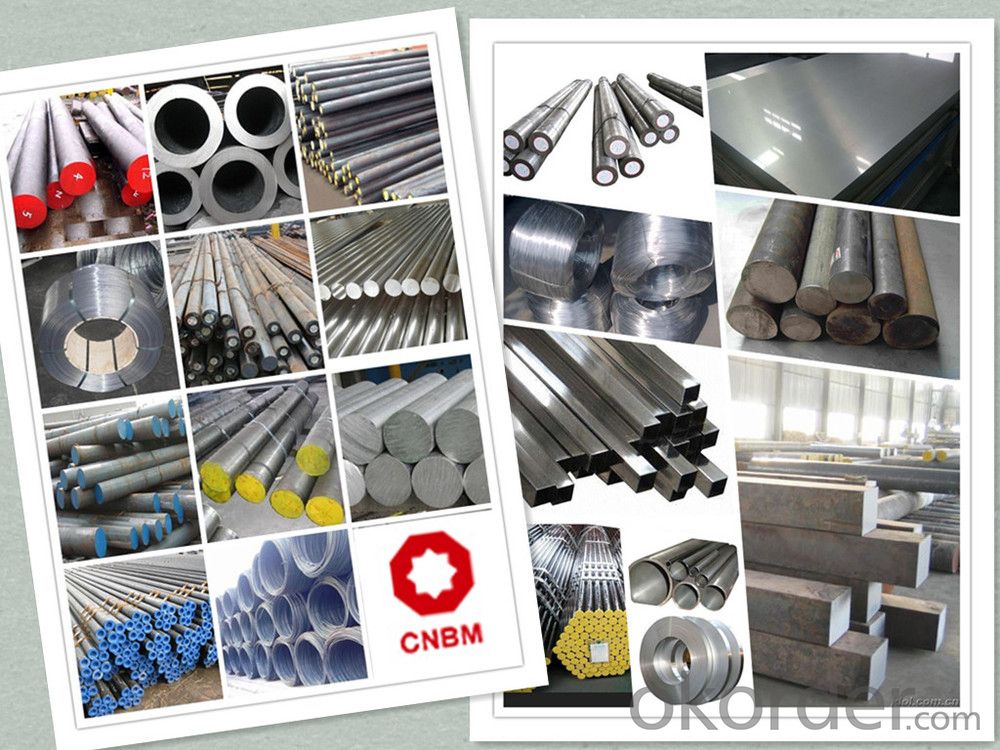
Product Overviews
| Product Name | Typical Grades | Diameter(mm) | Standard adopted |
| Carbon Steel | 20 (1020/S20C/C22) | Ø16-Ø300 |
GB/SAE/JIS/DIN
|
| 40 (1040/S40C/C40) | |||
| 45 (1045/S45C/C45) | |||
| Bearing Steel | GCr9 (51100/SUJ1) | Ø12-Ø250 | |
| GCr15 (52100/SUJ2/100Gr6) | |||
| GCr9SiMn (A485-Gr.1/SUJ3) | |||
Cr-Mo Steel | 20Cr (5120/SCr420H/20Cr4) | Ø12-Ø250 | |
| 40Cr (5140/SCr440/41Cr4) | |||
| 42CrMo(4140/SCM440/42CrMo4) | |||
| Gear Steel | 20CrNiMo | Ø16-Ø600 | |
| 20CrMn(5115/SMnC420/20MnCr5) | |||
| 20CrNiMo(8620/SNCM220/20CrMiMo2) |
Application
| Carbon Steel | Mold bottom, Plastic mold, Construction machinery parts Automobile parts, Security grills, Screens, Construction |
| Bearing Steel | Aerospace, Navigation, Nuclear energy, Chemical industry Electronic information, Petrochemical, Instrument and meter Transportation |
| Cr-Mo Steel | Mechanism & Fasteners gear, Stressed components for vehicles Engines and machines, Parts of larger cross-section |
| Gear Steel | All kinds of gears, Statically and dynamically stressed component for vehicles Engines and machine, Larger cross-section parts, Crankshafts |
Work Shop
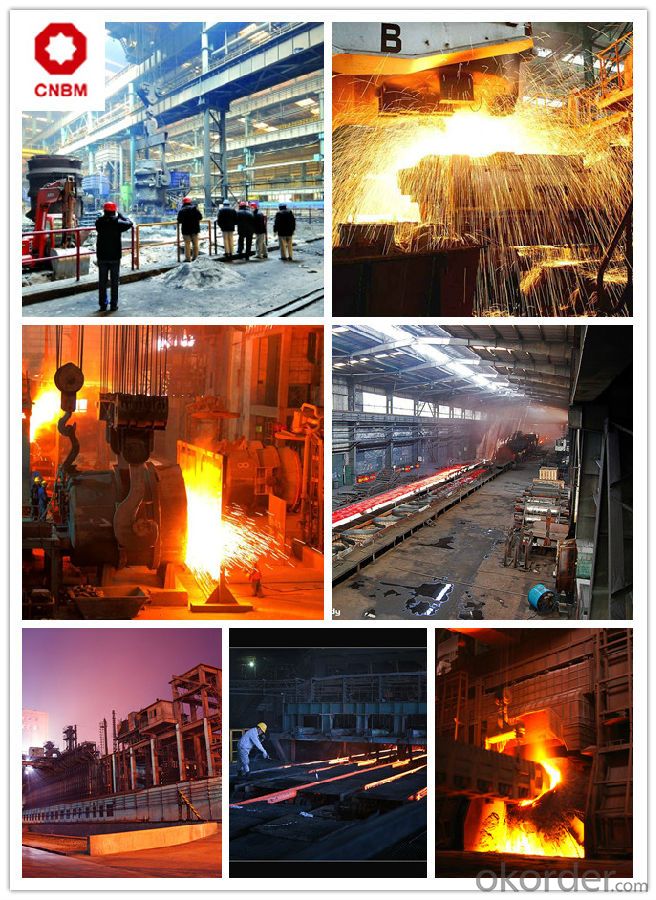
Company Information
CNBM International Corporation is the most important trading platform of CNBM group.
Whith its advantages, CNBM International are mainly concentrate on Cement, Glass, Iron and Steel, Ceramics industries and devotes herself for supplying high qulity series of refractories as well as technical consultancies and logistics solutions.

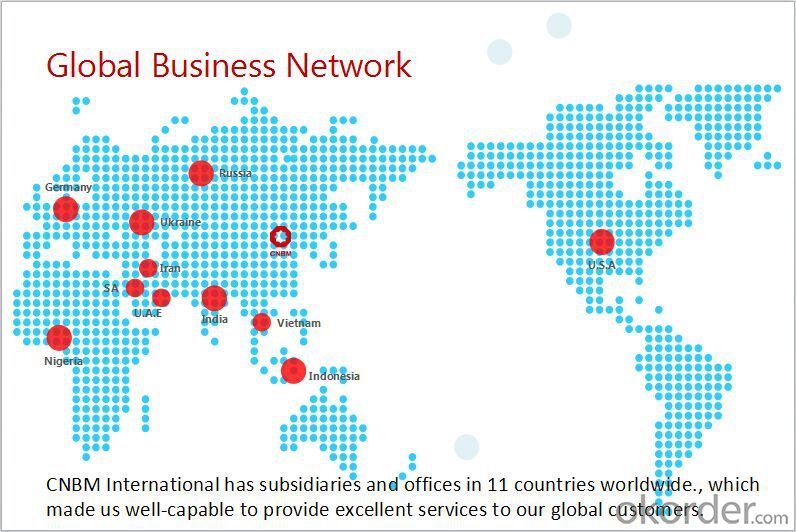
FAQ
1, Your advantages?
professional products inquiry, products knowledge train (for agents), smooth goods delivery, excellent customer solution proposale
2, Test & Certificate?
SGS test is available, customer inspection before shipping is welcome, third party inspection is no problem
3, Factory or Trading Company?
CNBM is a trading company but we have so many protocol factories and CNBM works as a trading department of these factories. Also CNBM is the holding company of many factories.
4, Payment Terms?
30% TT as deposit and 70% before delivery.
Irrevocable L/C at sight.
5, Trading Terms?
EXW, FOB, CIF, FFR, CNF
6, After-sale Service?
CNBM provides the services and support you need for every step of our cooperation. We're the business partner you can trust.
For any problem, please kindly contact us at any your convenient time.
We'll reply you in our first priority within 24 hours.
Packaging & Delivery
1, Packaging: seaworthy package or as required
2, Delivery: 35-45 days or based on quantity
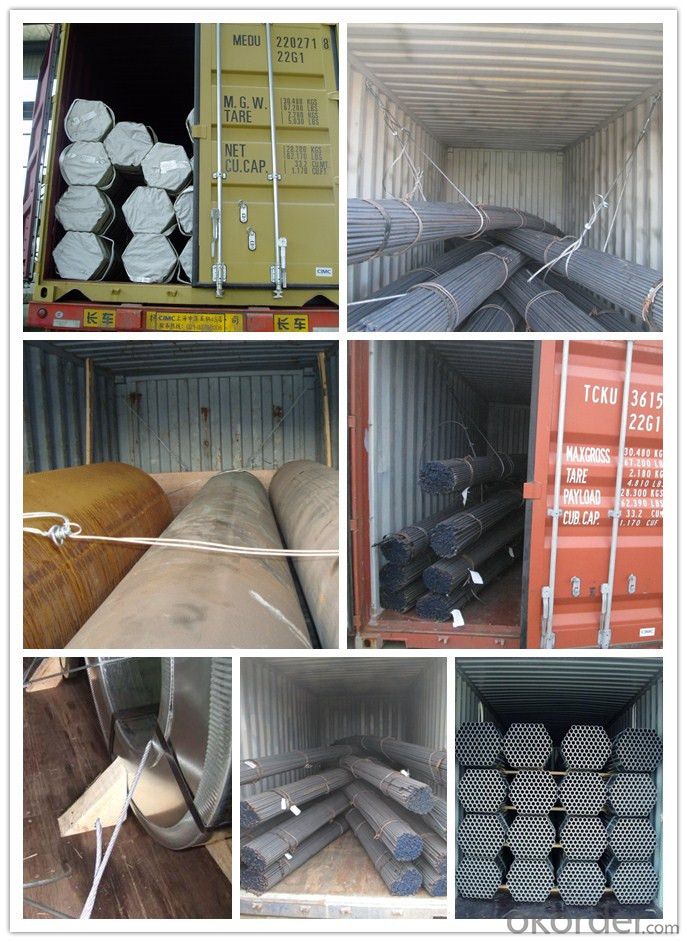
- Q: What are the different types of steel round bars used in the power generation industry?
- In the power generation industry, various types of steel round bars are utilized for different applications. These round bars are specifically chosen for their unique properties and characteristics that are required in various power generation processes. Some of the different types of steel round bars commonly used in the power generation industry include: 1. Carbon Steel Round Bars: Carbon steel round bars are widely used due to their affordability, strength, and ease of fabrication. They are commonly used in power generation equipment such as turbines, generators, and boilers. 2. Alloy Steel Round Bars: Alloy steel round bars are made by combining carbon steel with other elements such as chromium, nickel, and molybdenum to enhance their mechanical properties. These bars offer increased strength, corrosion resistance, and heat resistance, making them suitable for high-pressure and high-temperature applications in power plants. 3. Stainless Steel Round Bars: Stainless steel round bars are highly corrosion-resistant and exhibit excellent heat resistance. They are commonly used in power generation equipment that comes into contact with water or steam, such as condensers, heat exchangers, and valves. 4. Tool Steel Round Bars: Tool steel round bars are known for their exceptional hardness, wear resistance, and toughness. They are commonly used in power generation equipment that undergoes frequent machining, cutting, or forming processes, such as drilling equipment and turbine blades. 5. High-Speed Steel Round Bars: High-speed steel round bars are specifically designed to withstand high temperatures and maintain their hardness and cutting ability at elevated speeds. They are commonly used in power generation equipment, such as cutting tools, drills, and milling machines. 6. Duplex Steel Round Bars: Duplex steel round bars are a combination of austenitic and ferritic stainless steels, offering excellent strength, corrosion resistance, and weldability. They are commonly used in power plants for applications such as piping systems, pressure vessels, and heat exchangers. It is worth noting that the specific steel round bars used in the power generation industry can vary depending on the requirements and operating conditions of each power plant. Therefore, it is essential to consult with engineers and experts to determine the most suitable type of steel round bars for a particular power generation application.
- Q: How do you determine the hardness of a steel round bar?
- To determine the hardness of a steel round bar, various methods can be used. One common method is the Rockwell hardness test. This test involves applying a minor load to the surface of the bar using a diamond or a hardened steel ball, followed by a major load. The depth of penetration of the minor and major loads is measured, and a hardness value is determined based on the difference between the two depths. Another method is the Brinell hardness test, which involves indenting the surface of the steel bar using a hardened steel ball under a specified load. The diameter of the resulting indentation is measured, and the hardness value is calculated based on the load and the diameter of the indentation. Alternatively, the Vickers hardness test can also be used. This test involves applying a diamond pyramid-shaped indenter to the surface of the steel bar under a specific load. The size of the indentation is measured, and the hardness value is determined based on the load and the surface area of the indentation. It is important to note that the specific method used to determine the hardness of a steel round bar depends on factors such as the type of steel and the desired accuracy of the measurement. Additionally, other factors such as heat treatment and composition can also affect the hardness of the steel bar, so it is essential to consider these factors when determining hardness.
- Q: What are the different methods of cutting steel round bars?
- There are several methods of cutting steel round bars, including sawing, shearing, torch cutting, and using a lathe or milling machine.
- Q: 12mm Round steel, the material is Q235, the maximum weight can bear?
- The cross sectional area of 12mm steel is 3.14*36=113.04 mm, the maximum can bear much weight: 113.04*235=26564.40 cattle, is about 26.56440 kn.
- Q: How do I choose the right grade of steel round bar for my application?
- To select the appropriate grade of steel round bar for your needs, it is crucial to carefully consider various factors. Here are some guidelines to assist you in making an educated decision: 1. Begin by understanding the specific requirements of your application. Take into account factors like load-bearing capacity, resistance to corrosion, temperature endurance, and any applicable industry regulations or standards. 2. Determine the mechanical properties necessary for your application. Depending on the specific use, you may require certain properties such as strength, hardness, toughness, or ductility. Prioritize these properties based on their significance to your application. 3. Assess the environmental conditions in which the steel round bar will be used. This includes factors like exposure to moisture, chemicals, high temperatures, or abrasive surroundings. Certain grades of steel offer better resistance to corrosion or heat, rendering them more suitable for specific conditions. 4. Seek guidance from experts if you are uncertain about the most suitable grade of steel for your application. Consult metallurgists, engineers, or suppliers who can provide valuable insights based on their expertise and experience. 5. Compare and contrast different grades of steel round bars available in the market once you have a clear understanding of your application requirements. Consider factors such as composition, manufacturing process, and specific properties associated with each grade. Look for grades that closely align with your requirements. 6. Review the industry standards and specifications to determine if any specific grades are mandated for your application. These standards can offer guidance and ensure compliance with safety and quality requirements. 7. Evaluate the cost-effectiveness of various grades by considering factors like initial purchase cost, maintenance and replacement expenses, and the overall lifespan of the steel round bar. 8. If possible, conduct tests or trials using different grades of steel round bars to assess their performance in your specific application. This will provide valuable data to aid your decision-making process. By following these steps and taking all relevant factors into account, you can efficiently and effectively select the appropriate grade of steel round bar that meets the demands of your application.
- Q: What are the different types of heat treatment for steel round bars?
- There are several types of heat treatment for steel round bars, including annealing, normalizing, quenching, tempering, and case hardening.
- Q: Can steel round bars be used for making marine equipment?
- Certainly! Steel round bars are a viable option for the fabrication of marine equipment. Steel, being a versatile and resilient material, is extensively utilized in the maritime industry owing to its exceptional strength, resistance to corrosion, and capacity to endure harsh environmental conditions. By manipulating steel round bars, through machining, welding, and shaping, one can create a wide array of sizes and forms that precisely meet the unique specifications of marine equipment. Predominantly, these round bars are employed in the production of marine components such as propeller shafts, rudders, anchor chains, and structural supports. Moreover, to augment its resistance to corrosion, steel can be coated or treated, ensuring its suitability for prolonged exposure to saltwater and other corrosive elements prevalent in marine settings.
- Q: What are the different types of steel round bar surface finishes?
- Steel round bars can be treated with various surface finishes to meet different needs. Some of the most commonly used finishes are: 1. Bright: By polishing the steel round bar, a shiny and reflective surface is achieved. This finish is often employed for decorative purposes or when aesthetics are important. 2. Grinded: To achieve a smooth and even surface, the outer layer of the steel round bar is removed using a grinding wheel or abrasive belt. This finish is useful for eliminating imperfections or creating a uniform surface for further processing. 3. Brushed: Fine lines are created on the surface of the steel round bar using a wire brush or abrasive pad. This finish is preferred for its unique aesthetic appeal and is commonly used in architectural applications. 4. Powder-coated: Dry powder is applied to the surface of the steel round bar and then cured using heat. This finish provides a durable and corrosion-resistant coating that can be applied in various colors and textures. 5. Galvanized: A protective zinc coating is applied to the steel round bar to prevent corrosion. This finish is commonly used in outdoor or marine applications where the steel is exposed to moisture or harsh environmental conditions. 6. Oiled: A thin layer of oil is applied to the surface of the steel round bar. This finish offers temporary protection against corrosion and is often used for short-term storage or transportation purposes. 7. Shot-blasted: Small metallic or non-metallic particles are propelled at high speeds onto the surface of the steel round bar. This process creates a textured finish that improves the adhesion of subsequent coatings or paints. Each type of surface finish has its own unique advantages and is selected based on the specific requirements of the application.
- Q: Can steel round bars be used in the manufacturing of automotive parts?
- Indeed, the utilization of steel round bars in the production of automotive parts is possible. These bars possess numerous advantages that render them suitable for this purpose. Primarily, steel, being a robust and long-lasting material, is ideal for automotive components that necessitate high strength and structural integrity. Furthermore, steel round bars can be easily machined and shaped into various forms and sizes, facilitating the creation of customized automotive parts. Moreover, steel exhibits excellent resistance to heat and can endure high temperatures, making it appropriate for engine components and other parts exposed to extreme heat. Lastly, steel is a cost-effective material, which contributes to its popularity in the automotive industry. In conclusion, steel round bars are a dependable and versatile option when it comes to the manufacturing of automotive parts.
- Q: Can steel round bars be bent?
- Yes, steel round bars can be bent. The flexibility of steel allows it to be shaped and manipulated into various forms, including bending round bars into desired angles or curves.
Send your message to us
Carbon Steel Rod Bar AISI 1050
- Loading Port:
- China main port
- Payment Terms:
- TT OR LC
- Min Order Qty:
- 30 m.t.
- Supply Capability:
- 10000 m.t./month
OKorder Service Pledge
OKorder Financial Service
Similar products
Hot products
Hot Searches
Related keywords
